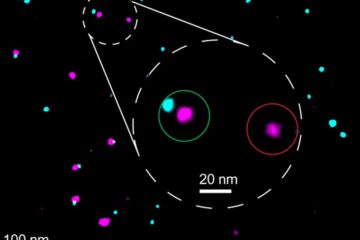New evolutionary insights into the early development of songbirds

The ability to reproduce is a fundamental trait of all life. How reproduction has evolved and how it functions on a genetic level is therefore of great interest to evolutionary biologists. During the early development of an animal embryo, cells are divided into two major types, germline and somatic cells. Germline cells are present in the reproductive organs and hold genetic information which is passed on to the next generation, whereas somatic cells are the cells which make up the rest of the organism. Biologists have discovered that in some organisms, certain genes and repetitive DNA-sequences are eliminated when cells become either somatic or germline, which means that not all cells in an organism contain the same genome.
In certain species, entire chromosomes are specific to the germline. One such chromosome in zebra finches is called the germline restricted chromosome (GRC). For the first time, an international team led by Alexander Suh at the Department of Ecology and Genetics at Uppsala University has performed a comprehensive genomic, transcriptomic, and proteomic analysis of the GRC in zebra finches. The GRC is the largest chromosome in the zebra finch genome and constitutes more than 10 percent of the genome.
“The GRC is a very strange chromosome. We found that some of its genes are repeated tens or even hundreds of times, whereas the somatic cells have only one gene copy.” says Cormac Kinsella, one of the first authors of the study.
By identifying specific genes and comparing them with genomic data from other species, the scientists could unravel the evolutionary history of the GRC. The results showed that the GRC is tens of millions of years old and likely present across all songbird species, which represent half of all bird species. The scientists also think that the GRC became an important factor in bird development because many genes associated with early embryonic development are found there. Because the GRC is not present in somatic cells, expression of its genes only affects germline cells thereby protecting somatic cells from possible negative effects.
“Because we found GRC expression on the RNA and protein level, we expect our evidence for selection acting on the GRC to become the starting point of further exciting discoveries.” says Francisco Ruiz-Ruano, the other first author of the study.
Alexander Sang-Jae Suh, email: alexander.suh@ebc.uu.se, tel: + 46 18-471 6466
Citation: Cormac M. Kinsella, Francisco J. Ruiz-Ruano, Anne-Marie Dion-Côté, Alexander J. Charles, Toni I. Gossmann, Josefa Cabrero, Dennis Kappei, Nicola Hemmings, Mirre J.P. Simons, Juan Pedro M. Camacho, Wolfgang Forstmeier, Alexander Suh. “Programmed DNA elimination of germline development genes in songbirds” Nature Communications, DOI: 10.1038/s41467-019-13427-4
Media Contact
More Information:
http://www.vr.seAll latest news from the category: Life Sciences and Chemistry
Articles and reports from the Life Sciences and chemistry area deal with applied and basic research into modern biology, chemistry and human medicine.
Valuable information can be found on a range of life sciences fields including bacteriology, biochemistry, bionics, bioinformatics, biophysics, biotechnology, genetics, geobotany, human biology, marine biology, microbiology, molecular biology, cellular biology, zoology, bioinorganic chemistry, microchemistry and environmental chemistry.
Newest articles

High-energy-density aqueous battery based on halogen multi-electron transfer
Traditional non-aqueous lithium-ion batteries have a high energy density, but their safety is compromised due to the flammable organic electrolytes they utilize. Aqueous batteries use water as the solvent for…

First-ever combined heart pump and pig kidney transplant
…gives new hope to patient with terminal illness. Surgeons at NYU Langone Health performed the first-ever combined mechanical heart pump and gene-edited pig kidney transplant surgery in a 54-year-old woman…

Biophysics: Testing how well biomarkers work
LMU researchers have developed a method to determine how reliably target proteins can be labeled using super-resolution fluorescence microscopy. Modern microscopy techniques make it possible to examine the inner workings…





















